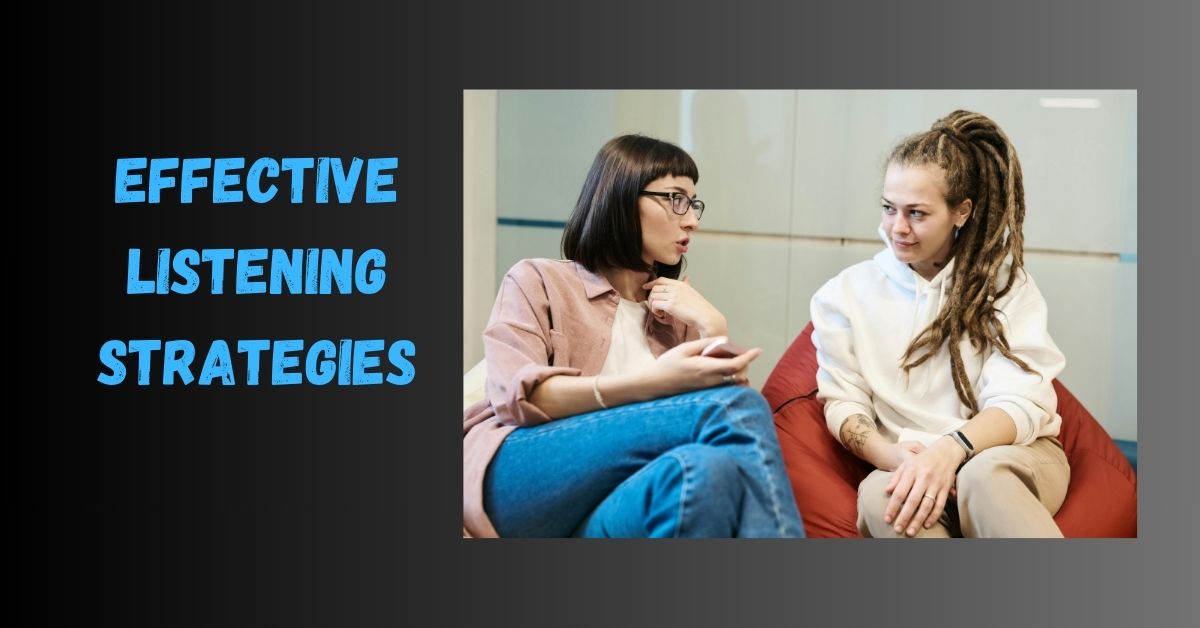Amongst basic professional etiquette is the essential communication skill – Listening.
While eloquence is good, it is also important to be a good listener, since all conversations are not one-sided.
A crucial part of human conversation, therefore, would be the ability to receive every bit of information the speaker intends to relay to you. I term this the ability to ‘meet people where they are’.
Unlike hearing, listening is a skill that must be deliberately learnt and though the path to active listening requires some consciously calculated steps, it sure can be navigated. For me, a few cues have helped.
This article seeks to highlight four Effective Listening Strategies or Communication Skills.
1. Do not assume you know where the conversation is headed.
Resist every urge to assume that you know what the speaker is about to say.
While it is possible that you may have heard something similar or had a similar experience yourself, distinct peculiarities will abound which will distinguish this particular scenario from yours or that ‘similar’ one.
Having the ‘similar’ in your head while struggling to hear what is being said will leave you with just the words of the conversation.
You will lose the ability to ‘see’ the scenario and put yourself in the speaker’s shoes, and thus, lose empathy. Instead, be deliberately attentive and open-minded.
2. Practice relative silence.
Do not chip in words while the other person is still talking. This can disrupt their thought process and sequence of information relay.
Instead, observe for a breakpoint in their speech process before making necessary and targeted vocalization. This, I believe, should first be with the objective of aiding information relay by the speaker and the assimilation of the listener.
3. Show that you are listening.
By careful and strategic vocalizations, nods, smiles, eye-contact, facial expressions etc., let the speaker know that you are actively engaged in the conversation. Maintain an open and inviting posture.
Some verbal responses may also be necessary, responses like:
“Tell me more…”
“What did you just say?’’
“How did that make you feel?”
“So…”
“I understand”
“That makes sense”
4. Hear beyond the words; herein lies listening.
This, for me, is the crux of the art of listening. Decipher the voice behind the words; the excitement, the pain, the confusion, the love, the disdain, the joy, the anger, the fear, the displeasure, the bitterness.
Get the tone; read the body language-eye movements, gesticulations of the limbs – see through the speaker’s lenses.
When you are at this point, you get the reason this is not just that similar experience you had or heard of and empathy comes effortlessly.
Listen to understand; seek to decode the speaker’s thoughts, feelings and needs.
Stay present and focus on the conversation and view silence as an opportunity for reflection and understanding, rather than unnecessary interruptions.
Conclusion
A good conversation should make you feel heard, more informed, and satisfied, but this is when you have successfully conveyed your words along with its voice and these have been duly received.
Active listening helps the speaker relay information efficiently; enables the hearer to receive, internalize, and process what he heard effectively; and positions the listener to better provide feedback.
When we meet people where they are in their various thought processes, it helps them (and of course the listener) to better navigate the subject of discourse towards a balance point.
This makes a dialogue, debate, discussion, deliberation, and any other form of conversation worthwhile.





